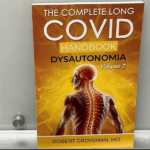Working out is one of the keys to living a healthy life, as regular movement positively impacts both your body and mind. You may notice an improved mood, feel more energetic, experience better sleep, and gain greater confidence overall. Physical exercise may also reduce the likelihood of developing chronic illness, be a good management tool, and improve your general well-being if you’re dealing with a chronic condition. However, carrying out your activities safely is crucial so that the risk of injuring yourself stays at a minimum.
For instance, if you’ve just started a regular workout routine, avoiding doing anything too intense or strenuous right from the beginning is recommended, as the likelihood of hurting yourself is quite high. However, this doesn’t mean that only those who are inexperienced can become injured. Even regular, daily activities such as walking can cause injuries. Here are some of the most common types you should be mindful of, as well as the treatment options and preventative methods you must keep in mind.
Sprained Ankle
A sprained ankle is a common type of injury, yet it can still cause significant discomfort and impact daily activities. Suppose your injury happened at the gym, and you believe it may have been due to someone else’s negligence. In that case, you might be eligible to pursue compensation through an “accident in public places” claim, depending on specific circumstances. To understand everything the process includes, consider consulting Public Interest Lawyers and get input from their team of experts. You will get a more comprehensive view of the documentation you should prepare, including medical bills and proof of the negative impact on your earnings if you were forced to take a lot of time off work due to your injury.
The most common symptom associated with an ankle sprain is pain, which can be intense. Some other signs you will notice include tenderness to the touch, bruising or discoloration, itching, and swelling. The joints will most likely feel stiff, and your feet could feel numb or cold. Most ankle sprains will clear up on their own, but it can potentially take weeks for all symptoms to go away. If you’re in a lot of pain and walking makes you extremely uncomfortable, it’s a good idea to talk to a doctor and get treatment so that your symptoms become more manageable and resolve much faster.
Knee Injuries
Knee injuries can be quite painful and may interfere significantly with daily activities. In some instances, they can have lasting effects, causing occasional discomfort or stiffness. However, recovery from such injuries is often achievable, especially with recent advances in medication and surgical techniques that offer improved precision.
If you injure your ligaments, you might experience a sudden onset of pain, often described as severe. Some individuals report hearing a snap or pop; swelling may appear within the first 24 hours. The knee might feel unstable or different, and putting weight on the affected leg can be challenging and uncomfortable.
Treatment involves plenty of rest and ice for twenty to thirty minutes every three to four hours. Putting an elastic badge on your knee helps with compression, can reduce swelling, or at least ensure it doesn’t get any worse. Keeping your knee raised will also help fluid travel through the tissue more efficiently, and you can consider a knee brace when you start taking your first post-injury steps. When you feel confident to do so, you can try to do some strengthening and stretching exercises, but make sure to keep things simple and don’t push yourself too much.
Lower Back Injuries
The lower back supports the upper body’s weight and endures significant daily movement and stress, making it a common area for discomfort. Lower back pain can lead to stiffness and is often associated with lifting heavy weights, particularly during workouts. Suppose you’ve taken a break from exercise and plan to resume previous routines. In that case, focusing on proper form and technique may be helpful, as many lower back injuries occur from inadequate posture or technique.
Pain from a lower back strain may be localized and typically does not extend to the legs, often limiting the range of motion and making it difficult to maintain regular posture. Muscle spasms might also occur, and discomfort could persist for approximately two weeks. Initially, cold compresses can be applied for 15-20 minutes to help with swelling. After a few days, heat therapy may be used to relax the muscles and alleviate pain. Over-the-counter medications may also provide temporary relief from discomfort and assist with inflammation.
Prevention
Eliminating the risk of injury is not possible, but there are several ways to prevent them from happening. Warming up before exercising prepares your body for movements, increasing your heart rate and loosening the muscles and joints. You should also have a cool-down after every workout to help your body return to its regular state. Stretching and starting with the simpler exercises before moving on to the more demanding ones can also help. Having a diverse workout ensures that you’re not overusing a particular group of muscles to the point of exhaustion and decreases the incidence of repetitive-use wounds.
Working out should be part of your weekly routine since it positively impacts the body and mind. However, it is essential to remember the importance of exercising in a safe and reasonable manner to avoid injuries.
Disclaimer: The information provided in this article is for general informational purposes only and is not intended as medical advice. Readers should consult a qualified healthcare professional before making any health-related decisions. The contents of this article should not be used as a substitute for professional medical advice, diagnosis, or treatment.
Published by: Nelly Chavez



















